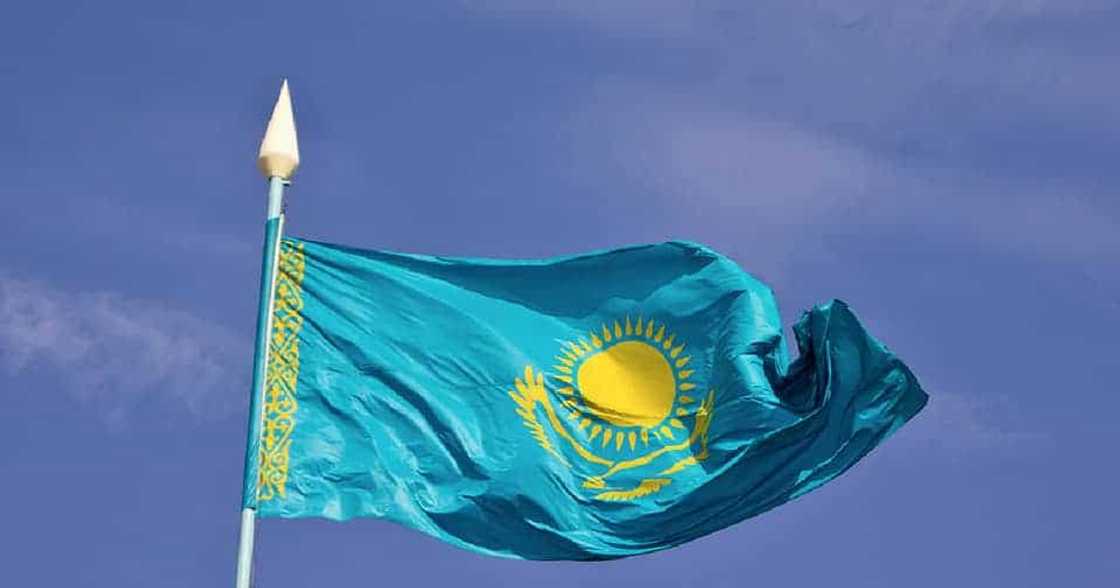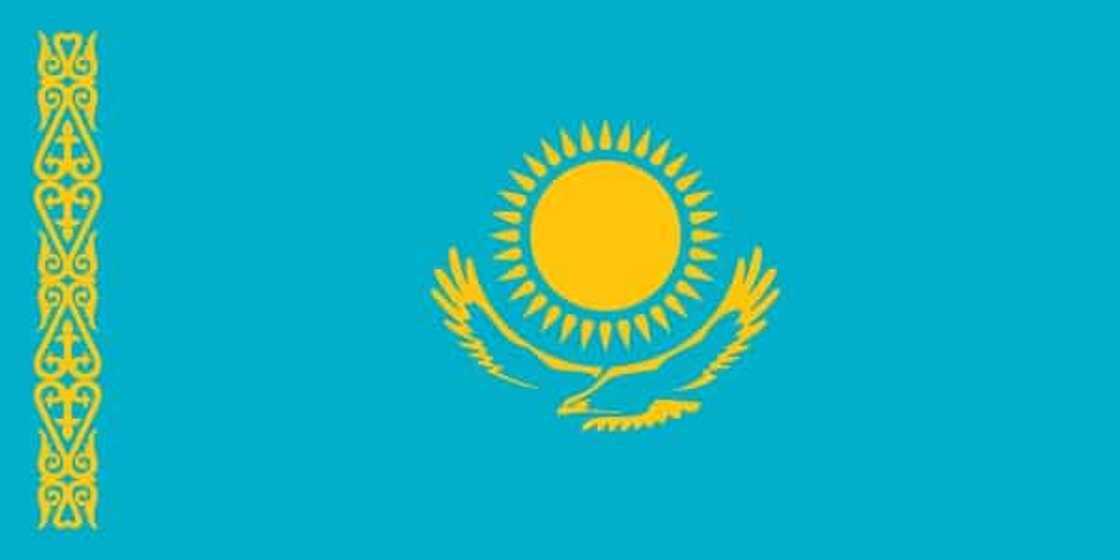Kazakhstan flag: look, symbols, meaning of colours, history
After the dissolution of the Soviet Union in 1991, the former member countries took some measures to reflect their newfound independence. Some of these included creating new national symbols and policies. The Republic of Kazakhstan was one of the USSR’s member states to adopt a new banner after the dissolution. The current Kazakhstan flag symbolizes various aspects of the country.

Source: UGC
The current Kazakhstan flag was adopted on 4th June 1992 as a replacement for the Kazakh Soviet Socialist Republic banner. The current one has a mixture of colors and symbols that depict some aspects of the Kazakh culture, history, and traditions. Read on to find out more about this national symbol.
History of the flag of Kazakhstan
The Kazakh people descended from a mixture of Turkic and Mongol descents centuries ago. The Turkic-Mongol people were widely associated with flying the ‘Blue Banner’ in Central Asia. This partly explains the dominant use of the color on the blue flag with yellow circle.

Read also
Pia Wurtzbach, naloka sa buwis-buhay na cruise sa Cape Town dahil sa lakas ng alon na humahampas sa barko
What do the colors represent in the Kazakhstan flag?
The banner includes a light blue background with yellow sun heraldry at the center and a steppe eagle below the sun. There is also vertically-oriented embroidery running along the flag’s hoist. This is often part of ornamental flags in certain countries. The items are considered symbols of independence and strength by the Kazakh people.

Source: UGC
The blue color has several meanings. One is the association of blue with well-being, tranquility, and peace. The blue background has also been used to represent the diversity of the Turkic people in modern-day Kazakhstan. These include Uyghurs, Mongols, Tatars, and Kazakhs. It is also the color of water symbols, and the sky god Tengri.
Who designed Kazakhstan flag?
The banner was designed by Shaken Niyazbekov in 1992. Initially, the band along the hoist was red but was later changed to yellow to leave only two colors on the flag. The design of the ornament was partially influenced by the Belarusian flag, which also features a vertically-running band of embroidery along its hoist.
Which bird is on the Kazakhstan flag?
The banner has a Kazakhstan eagle (golden steppe eagle) in flight right below the symbol of the sun. This Kazakhstan national animal is one of the most agile and nimble birds of prey in the world. Its presence on the national flag symbolizes freedom, independence, and movement into the future. Additionally, it also represents the power of the state.
When was the current flag of Kazakhstan established?
The Kazakhstan light blue flag was first recognized in law as the State banner of the Republic of Kazakhstan on the 4th of July 1992. This national symbol of unity is described as ‘State Flag of the Republic of Kazakhstan is a rectangular piece of cloth of sky-blue color bearing in its center a sun with rays, with a soaring eagle underneath. Images of the sun, rays, and the eagle are of golden color.’
What is the meaning of the flag with sun?
The sun is considered to be at the center of all life and energy on earth. The Kazakh’s ancestors used the sun to measure movements in time during the day. On the banner, the sun symbolizes abundance and wealth. The sun rays on the banner resemble grains, which are, in turn, considered the basis of prosperity and abundance.
The Kazakhstan flag is one of the nation’s uniting symbols. It represents independence from the Soviet Union, abundance, wealth, life, prosperity, and ethnic diversity. As is the case with other sovereign nations, the country’s flag is an integral part of its national heritage. What aspect of the banner did you find fascinating?
Source: KAMI.com.gh



